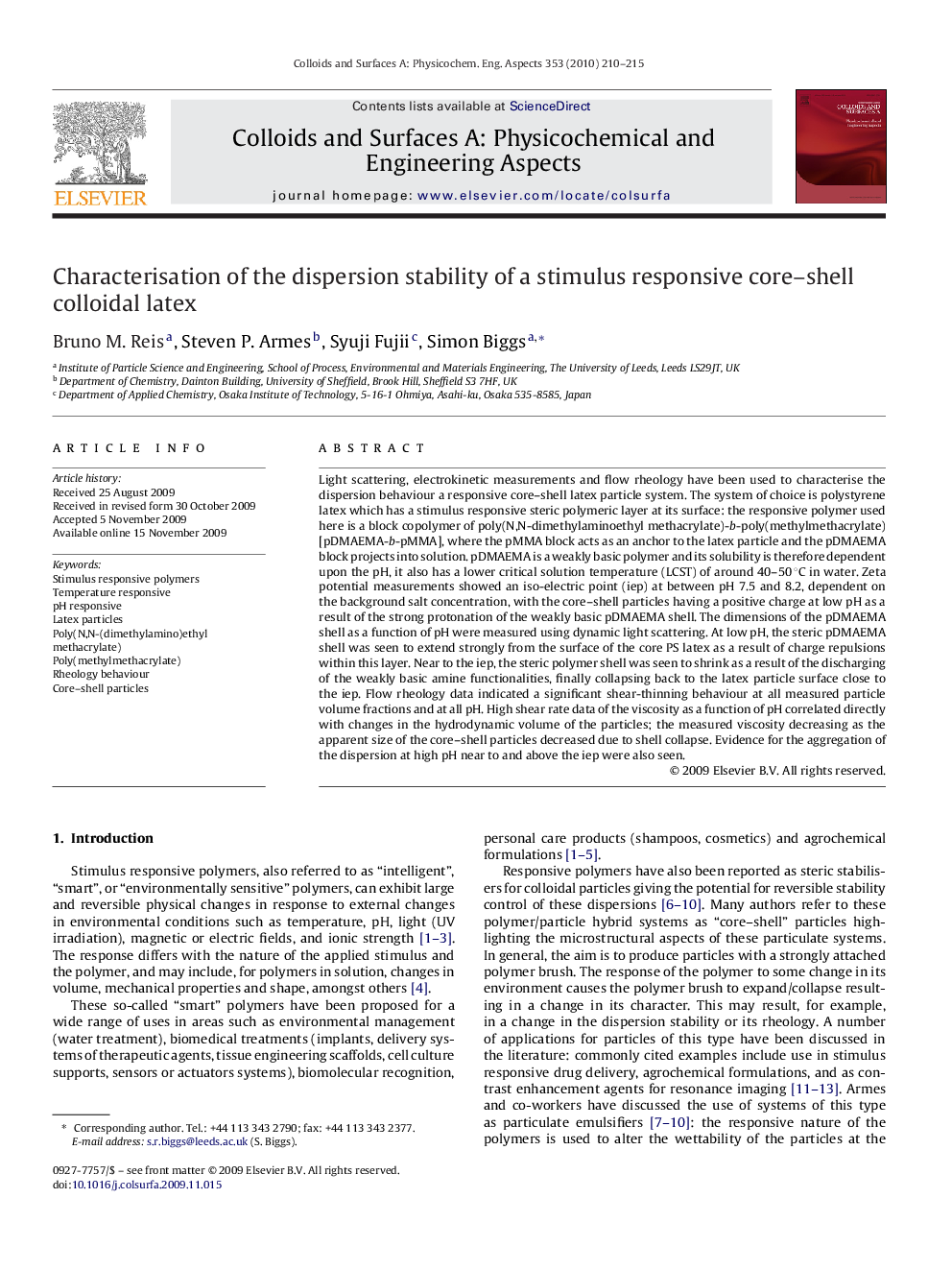| Article ID | Journal | Published Year | Pages | File Type |
|---|---|---|---|---|
| 595687 | Colloids and Surfaces A: Physicochemical and Engineering Aspects | 2010 | 6 Pages |
Light scattering, electrokinetic measurements and flow rheology have been used to characterise the dispersion behaviour a responsive core–shell latex particle system. The system of choice is polystyrene latex which has a stimulus responsive steric polymeric layer at its surface: the responsive polymer used here is a block copolymer of poly(N,N-dimethylaminoethyl methacrylate)-b-poly(methylmethacrylate) [pDMAEMA-b-pMMA], where the pMMA block acts as an anchor to the latex particle and the pDMAEMA block projects into solution. pDMAEMA is a weakly basic polymer and its solubility is therefore dependent upon the pH, it also has a lower critical solution temperature (LCST) of around 40–50 °C in water. Zeta potential measurements showed an iso-electric point (iep) at between pH 7.5 and 8.2, dependent on the background salt concentration, with the core–shell particles having a positive charge at low pH as a result of the strong protonation of the weakly basic pDMAEMA shell. The dimensions of the pDMAEMA shell as a function of pH were measured using dynamic light scattering. At low pH, the steric pDMAEMA shell was seen to extend strongly from the surface of the core PS latex as a result of charge repulsions within this layer. Near to the iep, the steric polymer shell was seen to shrink as a result of the discharging of the weakly basic amine functionalities, finally collapsing back to the latex particle surface close to the iep. Flow rheology data indicated a significant shear-thinning behaviour at all measured particle volume fractions and at all pH. High shear rate data of the viscosity as a function of pH correlated directly with changes in the hydrodynamic volume of the particles; the measured viscosity decreasing as the apparent size of the core–shell particles decreased due to shell collapse. Evidence for the aggregation of the dispersion at high pH near to and above the iep were also seen.
